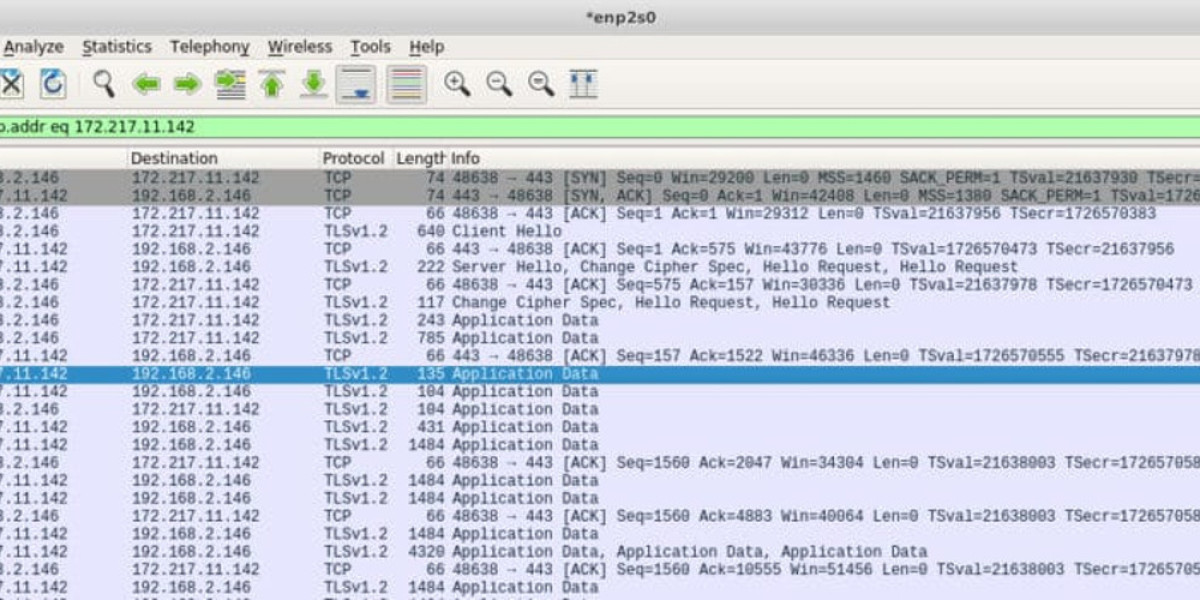
Today, we are thrilled to reveal that DeepSeek R1 distilled Llama and Qwen designs are available through Amazon Bedrock Marketplace and Amazon SageMaker JumpStart. With this launch, you can now release DeepSeek AI's first-generation frontier design, DeepSeek-R1, along with the distilled variations varying from 1.5 to 70 billion criteria to build, experiment, and properly scale your generative AI ideas on AWS.

In this post, we show how to get going with DeepSeek-R1 on Amazon Bedrock Marketplace and SageMaker JumpStart. You can follow comparable actions to release the distilled variations of the models also.
Overview of DeepSeek-R1
DeepSeek-R1 is a large language model (LLM) developed by DeepSeek AI that uses support learning to enhance thinking abilities through a multi-stage training process from a DeepSeek-V3-Base structure. A key identifying function is its support learning (RL) action, which was used to refine the design's responses beyond the basic pre-training and tweak process. By including RL, DeepSeek-R1 can adapt better to user feedback and objectives, eventually enhancing both importance and clearness. In addition, DeepSeek-R1 uses a chain-of-thought (CoT) approach, implying it's equipped to break down intricate queries and factor through them in a detailed manner. This directed reasoning procedure allows the model to produce more accurate, transparent, and detailed answers. This model combines RL-based fine-tuning with CoT capabilities, aiming to generate structured responses while concentrating on interpretability and user interaction. With its comprehensive capabilities DeepSeek-R1 has recorded the industry's attention as a flexible text-generation model that can be integrated into various workflows such as agents, rational thinking and information interpretation jobs.
DeepSeek-R1 utilizes a Mix of Experts (MoE) architecture and is 671 billion specifications in size. The MoE architecture allows activation of 37 billion parameters, enabling efficient reasoning by routing queries to the most relevant professional "clusters." This method allows the model to focus on different problem domains while maintaining overall efficiency. DeepSeek-R1 needs at least 800 GB of HBM memory in FP8 format for reasoning. In this post, larsaluarna.se we will use an ml.p5e.48 xlarge instance to release the design. ml.p5e.48 xlarge features 8 Nvidia H200 GPUs supplying 1128 GB of GPU memory.
DeepSeek-R1 distilled models bring the reasoning capabilities of the main R1 model to more efficient architectures based upon popular open models like Qwen (1.5 B, 7B, 14B, and 32B) and Llama (8B and 70B). Distillation refers to a procedure of training smaller sized, more efficient designs to imitate the behavior and reasoning patterns of the larger DeepSeek-R1 model, utilizing it as an instructor design.
You can deploy DeepSeek-R1 model either through SageMaker JumpStart or Bedrock Marketplace. Because DeepSeek-R1 is an emerging design, we advise releasing this design with guardrails in location. In this blog, we will use Amazon Bedrock Guardrails to present safeguards, prevent hazardous content, and examine models against crucial security criteria. At the time of writing this blog, for DeepSeek-R1 deployments on SageMaker JumpStart and Bedrock Marketplace, Bedrock Guardrails supports just the ApplyGuardrail API. You can produce numerous guardrails tailored to various use cases and use them to the DeepSeek-R1 design, improving user experiences and standardizing safety controls across your generative AI applications.
Prerequisites
To release the DeepSeek-R1 design, you require access to an ml.p5e circumstances. To check if you have quotas for P5e, open the Service Quotas console and under AWS Services, choose Amazon SageMaker, and verify you're using ml.p5e.48 xlarge for endpoint usage. Make certain that you have at least one ml.P5e.48 xlarge instance in the AWS Region you are releasing. To ask for a limitation increase, develop a limit increase demand and reach out to your account team.
Because you will be releasing this model with Amazon Bedrock Guardrails, make certain you have the correct AWS Identity and Gain Access To Management (IAM) consents to use Amazon Bedrock Guardrails. For instructions, see Establish authorizations to utilize guardrails for material filtering.
Implementing guardrails with the ApplyGuardrail API
Amazon Bedrock Guardrails permits you to present safeguards, prevent hazardous content, and examine designs against crucial safety criteria. You can execute safety measures for the DeepSeek-R1 design utilizing the Amazon Bedrock ApplyGuardrail API. This allows you to apply guardrails to examine user inputs and model responses released on Amazon Bedrock Marketplace and SageMaker JumpStart. You can produce a guardrail using the Amazon Bedrock console or the API. For the example code to create the guardrail, see the GitHub repo.
The general circulation includes the following steps: First, the system gets an input for the model. This input is then processed through the ApplyGuardrail API. If the input passes the guardrail check, it's sent out to the model for inference. After getting the model's output, another guardrail check is applied. If the output passes this last check, it's returned as the final result. However, if either the input or output is stepped in by the guardrail, gratisafhalen.be a message is returned suggesting the nature of the intervention and whether it happened at the input or output stage. The examples showcased in the following sections demonstrate reasoning utilizing this API.
Deploy DeepSeek-R1 in Amazon Bedrock Marketplace
Amazon Bedrock Marketplace provides you access to over 100 popular, emerging, and specialized foundation designs (FMs) through Amazon Bedrock. To gain access to DeepSeek-R1 in Amazon Bedrock, complete the following actions:
1. On the Amazon Bedrock console, select Model catalog under Foundation designs in the navigation pane.
At the time of composing this post, you can utilize the InvokeModel API to conjure up the design. It does not support Converse APIs and other Amazon Bedrock tooling.
2. Filter for DeepSeek as a company and select the DeepSeek-R1 model.
The model detail page supplies vital details about the model's abilities, pricing structure, and application guidelines. You can find detailed usage guidelines, including sample API calls and code bits for combination. The model supports different text generation jobs, including content production, code generation, and question answering, utilizing its support finding out optimization and bytes-the-dust.com CoT thinking capabilities.
The page likewise consists of implementation options and licensing details to help you begin with DeepSeek-R1 in your applications.
3. To start using DeepSeek-R1, pick Deploy.
You will be triggered to set up the deployment details for DeepSeek-R1. The design ID will be pre-populated.
4. For Endpoint name, get in an endpoint name (between 1-50 alphanumeric characters).
5. For Number of circumstances, get in a number of circumstances (in between 1-100).
6. For Instance type, pick your circumstances type. For optimal performance with DeepSeek-R1, a GPU-based circumstances type like ml.p5e.48 xlarge is recommended.
Optionally, you can set up sophisticated security and facilities settings, including virtual personal cloud (VPC) networking, service role approvals, and encryption settings. For the majority of use cases, the default settings will work well. However, for production deployments, you might want to review these settings to line up with your organization's security and compliance requirements.
7. Choose Deploy to begin using the model.
When the deployment is total, you can test DeepSeek-R1's capabilities straight in the Amazon Bedrock playground.
8. Choose Open in playground to access an interactive interface where you can experiment with various prompts and change model criteria like temperature and maximum length.
When using R1 with Bedrock's InvokeModel and Playground Console, use DeepSeek's chat template for ideal results. For instance, <|begin▁of▁sentence|><|User|>material for reasoning<|Assistant|>.
This is an excellent method to explore the model's thinking and text generation capabilities before incorporating it into your applications. The play area supplies immediate feedback, helping you understand how the model reacts to different inputs and letting you fine-tune your triggers for optimal results.
You can rapidly evaluate the design in the playground through the UI. However, to conjure up the deployed design programmatically with any Amazon Bedrock APIs, you require to get the endpoint ARN.
Run inference using guardrails with the deployed DeepSeek-R1 endpoint
The following code example demonstrates how to carry out reasoning using a deployed DeepSeek-R1 design through Amazon Bedrock utilizing the invoke_model and ApplyGuardrail API. You can develop a guardrail using the Amazon Bedrock console or the API. For the example code to develop the guardrail, see the GitHub repo. After you have actually created the guardrail, utilize the following code to execute guardrails. The script initializes the bedrock_runtime customer, configures inference specifications, and sends a demand to produce text based on a user timely.
Deploy DeepSeek-R1 with SageMaker JumpStart
SageMaker JumpStart is an artificial intelligence (ML) center with FMs, built-in algorithms, and prebuilt ML services that you can deploy with simply a few clicks. With SageMaker JumpStart, pipewiki.org you can tailor pre-trained designs to your usage case, with your data, and deploy them into production utilizing either the UI or SDK.
Deploying DeepSeek-R1 model through SageMaker JumpStart offers 2 convenient approaches: using the intuitive SageMaker JumpStart UI or executing programmatically through the SageMaker Python SDK. Let's check out both methods to help you pick the technique that best matches your requirements.
Deploy DeepSeek-R1 through SageMaker JumpStart UI
Complete the following steps to deploy DeepSeek-R1 utilizing SageMaker JumpStart:
1. On the SageMaker console, select Studio in the navigation pane.
2. First-time users will be prompted to develop a domain.
3. On the SageMaker Studio console, pick JumpStart in the navigation pane.
The model web browser displays available designs, with details like the service provider name and model capabilities.
4. Look for DeepSeek-R1 to view the DeepSeek-R1 model card.
Each model card shows key details, including:
- Model name
- Provider name
- Task category (for example, Text Generation).
Bedrock Ready badge (if appropriate), suggesting that this design can be registered with Amazon Bedrock, allowing you to utilize Amazon Bedrock APIs to conjure up the model
5. Choose the model card to view the model details page.
The model details page includes the following details:
- The design name and service provider details.
Deploy button to release the model.
About and Notebooks tabs with detailed details
The About tab consists of important details, such as:
- Model description.
- License details.
- Technical specifications.
- Usage standards
Before you release the model, it's suggested to examine the design details and license terms to confirm compatibility with your use case.
6. Choose Deploy to proceed with deployment.
7. For Endpoint name, use the immediately produced name or create a custom one.
8. For Instance type ¸ choose an instance type (default: ml.p5e.48 xlarge).
9. For Initial circumstances count, go into the number of circumstances (default: 1).
Selecting suitable circumstances types and counts is important for expense and performance optimization. Monitor your release to adjust these settings as needed.Under Inference type, Real-time reasoning is picked by default. This is enhanced for sustained traffic and low latency.
10. Review all setups for accuracy. For this design, we strongly advise sticking to SageMaker JumpStart default settings and making certain that network isolation remains in location.
11. Choose Deploy to deploy the design.
The implementation process can take numerous minutes to finish.
When implementation is total, your endpoint status will alter to InService. At this point, the design is ready to accept inference requests through the endpoint. You can keep track of the implementation development on the SageMaker console Endpoints page, which will show relevant metrics and status details. When the implementation is complete, you can invoke the design utilizing a SageMaker runtime customer and integrate it with your applications.
Deploy DeepSeek-R1 utilizing the SageMaker Python SDK
To begin with DeepSeek-R1 utilizing the SageMaker Python SDK, you will require to set up the SageMaker Python SDK and make certain you have the required AWS approvals and environment setup. The following is a detailed code example that demonstrates how to deploy and utilize DeepSeek-R1 for inference programmatically. The code for deploying the model is offered in the Github here. You can clone the notebook and run from SageMaker Studio.
You can run extra demands against the predictor:
Implement guardrails and run reasoning with your SageMaker JumpStart predictor
Similar to Amazon Bedrock, you can likewise use the ApplyGuardrail API with your SageMaker JumpStart predictor. You can create a guardrail utilizing the Amazon Bedrock console or the API, and execute it as displayed in the following code:
Clean up
To prevent unwanted charges, complete the actions in this area to clean up your resources.
Delete the Amazon Bedrock Marketplace deployment
If you released the model utilizing Amazon Bedrock Marketplace, total the following actions:
1. On the Amazon Bedrock console, under Foundation designs in the navigation pane, pick Marketplace implementations.
2. In the Managed implementations section, find the endpoint you desire to delete.
3. Select the endpoint, and on the Actions menu, pick Delete.
4. Verify the endpoint details to make certain you're erasing the appropriate release: 1. Endpoint name.
2. Model name.
3. Endpoint status
Delete the SageMaker JumpStart predictor
The SageMaker JumpStart design you deployed will sustain costs if you leave it running. Use the following code to erase the endpoint if you wish to stop sustaining charges. For more details, see Delete Endpoints and Resources.
Conclusion
In this post, engel-und-waisen.de we checked out how you can access and release the DeepSeek-R1 model using Bedrock Marketplace and SageMaker JumpStart. Visit SageMaker JumpStart in SageMaker Studio or Amazon Bedrock Marketplace now to begin. For more details, describe Use Amazon Bedrock tooling with Amazon SageMaker JumpStart models, SageMaker JumpStart pretrained designs, Amazon SageMaker JumpStart Foundation Models, Amazon Bedrock Marketplace, and Starting with Amazon SageMaker JumpStart.
About the Authors
Vivek Gangasani is a Lead Specialist Solutions Architect for Inference at AWS. He assists emerging generative AI companies build ingenious options utilizing AWS services and accelerated compute. Currently, he is concentrated on developing techniques for fine-tuning and optimizing the inference performance of large language designs. In his free time, Vivek enjoys treking, enjoying motion pictures, and trying different cuisines.
Niithiyn Vijeaswaran is a Generative AI Specialist Solutions Architect with the Third-Party Model Science group at AWS. His area of focus is AWS AI accelerators (AWS Neuron). He holds a Bachelor's degree in Computer technology and Bioinformatics.

Jonathan Evans is a Specialist Solutions Architect working on generative AI with the Third-Party Model Science group at AWS.
Banu Nagasundaram leads item, engineering, and tactical collaborations for Amazon SageMaker JumpStart, SageMaker's artificial intelligence and generative AI center. She is passionate about constructing services that assist clients accelerate their AI journey and unlock company value.









